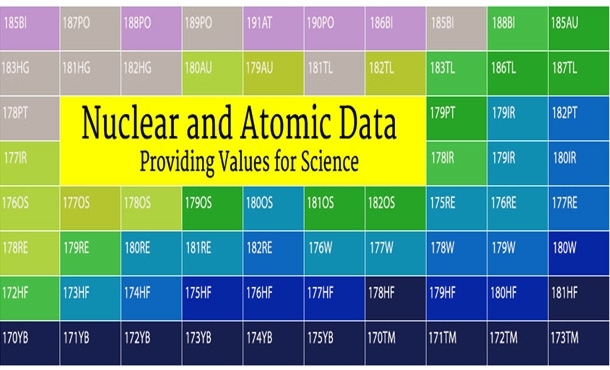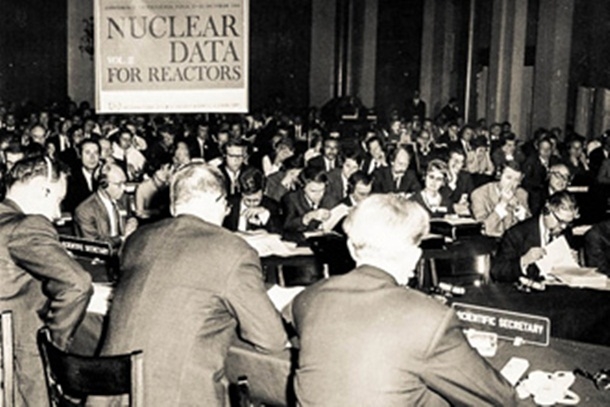IAEA Commemorates 50th Anniversary of IAEA Nuclear Data Section
18:22 | 04/06/2014


The IAEA Nuclear Data Section (NDS) has for the last 50 years hosted meetings and facilitated discussions in carrying out its mission data development and dissemination (Photo: IAEA).
On 2 June 2014, the IAEA celebrates the 50th anniversary of the IAEA Nuclear Data Section (NDS) and the work undertaken in nuclear data collection for the benefit of its Member States in the peaceful uses of nuclear technology. The IAEA created the NDS, originally known as the Nuclear Data Unit, in 1964 after recognizing the importance of establishing a body to manage nuclear and atomic data. Under the supervision of the International Nuclear Data Committee (INDC), the NDS has carried out the mission to collect, compile, review and disseminate nuclear and atomic data, while also serving as a coordinator and stimulus for nuclear data work worldwide. Its tasks have also encompassed supporting Member States, organizing international meetings and discussions among data producers and acting itself as a nuclear data centre.
Nuclear and atomic data are cumulative international resources produced and used globally for applications in research, education, medicine and industry, ranging from fission reactor technology to cancer radiotherapy to exploration for oil and other minerals. Nuclear technologies rely on accurate data to ensure the safe and effective application of nuclear techniques. These data also facilitate the research and innovation of new nuclear methods. The NDS's work helps to ensure that data are accurate, up-to-date and easily accessible for various facets of use.
However, developing data involves expensive and demanding procedures, and evaluating, compiling and disseminating such data requires specialized equipment and personnel as well as large amounts of processing time. This can be a challenge for Member States conducting data work, particularly for developing countries with limited resources.
The NDS provides support to Member States by organizing coordinated research projects (CRPs) and technology transfer activities with the aim to introduce skills and local infrastructure, as well as provide training and assistance to scientists in evolving their capabilities for the generation and use of atomic and nuclear data. These projects and activities also serve as avenues for the NDS to actively identify and address gaps in data in order to improve the detail and richness of data. This also helps to facilitate and accelerate data development while reducing the risk of duplicated data work.
Throughout the last five decades of work, the NDS has embraced the evolution of technology in undertaking the IAEA's activities related to the development and dissemination of atomic and nuclear data. The NDS's pioneering approach has influenced the IAEA's technological progress while supporting the IAEA's mandate to foster the exchange of scientific information for the peaceful and safe use of atomic energy.
Shortly after being established, the NDS moved from storing data on punch cards and magnetic tapes to using the IAEA's first and newly purchased mainframe computer to compile and organize data. The IAEA acquired the large machine in part to support the NDS's work, and, at the time, it was a rare asset as some estimated that the global computer market would not exceed five machines. The capabilities of the computer allowed NDS to more efficiently manage data and form what would be the foundation for databases that are still actively updated and used today.
Similarly, as early as 1988, the NDS began using the internet and email to develop and disseminate data. The NDS became one of the first Sections at the IAEA to run online Agency databases and later took the lead in being among the first to launch a webpage. By 2013, the NDS's forward-looking approach led to NDS databases and information being the first to be shifted to a web server in the "cloud", and in July 2013, the NDS launched the IAEA's first mobile application.
Looking to the Future
To date, the NDS has developed a large collection of databases of nuclear, atomic and molecular data that contain millions of data points as well as a wide range of authoritative publications. It has also supported countless CRPs and technology transfer activities while further strengthening global data networks. If the past work of NDS is any indication of its future, the NDS will undoubtedly continue leading the charge in using the latest technological tools, services and products to further build on and enrich data work globally. With the IAEA and NDS at the helm, scientific data exchanges will continue to flourish and enlarge the contribution of atomic energy to peace, health and prosperity throughout the world.
The IAEA will host an afternoon commemoration event on 2 June 2014 that will be opened by Daud Mohamad, IAEA Deputy Director General of the Department of Nuclear Sciences and Applications, and Alexander Bychkov, IAEA Deputy Director General of the Department of Nuclear Energy. There will also be speakers from the NDS sharing the history and future of NDS. Former NDS staff will give special presentations sharing their memories and views of working in NDS for the last 50 years.
Background
The NDS works with three main strands of data: atomic, molecular and nuclear. Atomic data refer to those sets of data related to the changes in the electrons in atoms, such as excitation (change of electron energy) or ionization (electron loss). Molecular data refer to two or more atoms bound together, known as molecules, which are interacting with electrons or ions. Nuclear data are sets of data related to the interactions of a particle, such as a neutron or a proton, with the nucleus of an atom, causing emission of particles.
Source: IAEA
